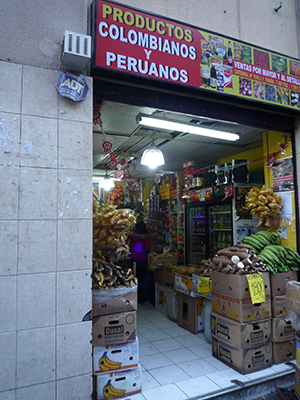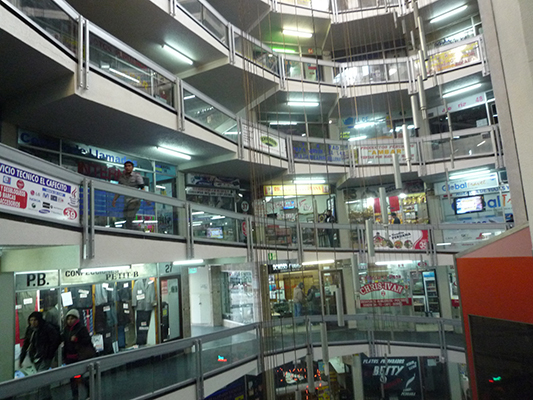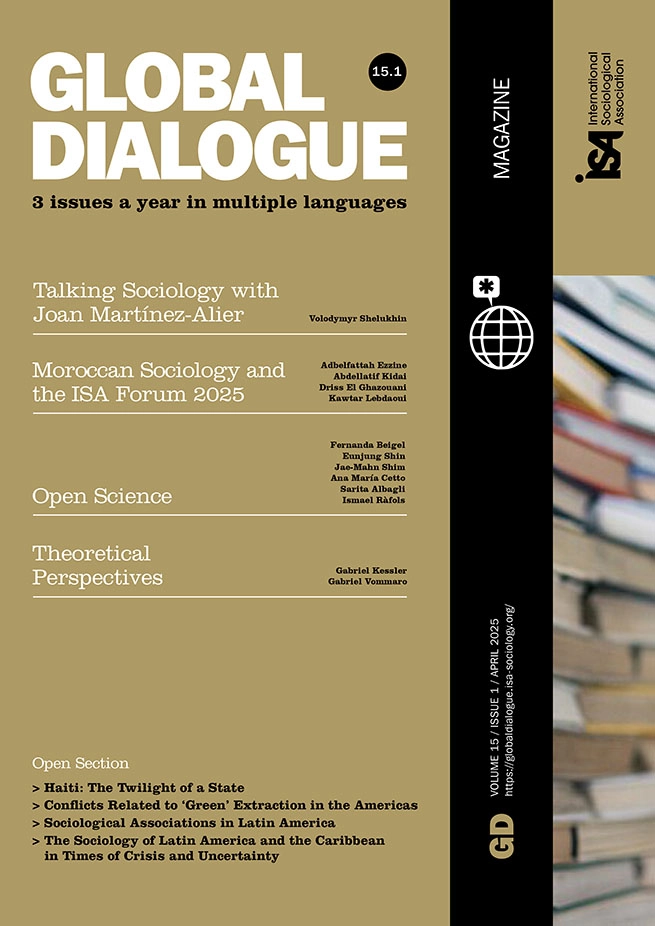A Migrant Occupation at the Center of Santiago de Chile

February 15, 2013
In the heart of the civic and historical center of Santiago de Chile lies the city’s largest migrant enclave. The area brings together a significant number of immigrants from various Latin American countries, though a clear majority is of Peruvian origin. These Peruvian immigrants have developed an intense commercial activity, focused on products for the foreign population, such as cookware, pre-made food sold as street snacks, call centers, parcel shipping, and remittance services.
Some of the factors behind the development of this enclave are: the availability of older homes and commercial storefronts as a result of the continuous process of depopulation of the city center during previous decades; a concentration of immigrants, precisely because of the availability of homes that are subdivided into small rooms and rented informally; the establishment of import companies that provide products of Peruvian origin, making them available to vendors who are just getting started in this area; and two amnesty processes carried out during Consertación governments (a political coalition of center-left), which allowed the regularization of immigrants and facilitated their subsequent incorporation into formal trade.

I would like to highlight three central features of this enclave. First, in immigrant labor and business, formal and informal practices often overlap. While the city government has sought to end street trading, currently, many formal stores still maintain informal practices such as selling on the streets, working without a contract, or selling products for which there is no authorization. These practices are merely strategies to increase the profits of vendors involved in a market with a high level of internal competition and thus a low level of economic returns.
The second interesting feature to note is that the enclave acts as a geographical reference point for the construction of identity in the immigrant community. This space is renowned among immigrants living in Santiago – by the rest of the inhabitants of the city, and by people who live in immigrants’ countries of origin – as a meeting place for all those who share the same condition of being foreigners.
The third element is related to the geographical position of this enclave within the city and how it affects the forms and meanings the enclave assumes. The fact that it is located in the civic and historical center of Santiago means that migrants establish all sorts of social relations with the other inhabitants of the area, be they office workers, tourists, civil servants, or workers in general. The type of social relations that they establish help shape the character, the meanings, and the boundaries that give the enclave its shape.
Indeed, migrants’ ways of inhabiting a geographically-bounded place within the city center generate meanings and representations that are often in tension with other accounts of the city. Here it is possible to point out two examples. The first is the idea that this part of the city is civically important, since it houses the executive and judicial powers, namely, the State Building, the Department of Justice, and numerous ministerial offices. It was here that the city was founded and where the Declaration of Independence was signed. Thus, this strong historical and democratic significance is in tension with the idea of a place of and for foreigners.
Second, the enclave calls into question the idea of a global city, a more modern way of representing Santiago that has been promoted recently by the city government. This includes campaigns that promote the idea of a clean, safe, and orderly city, along with a series of policies oriented to recovering urban space in the historical center that, for decades, has been going through increasing depopulation and abandonment. An enclave of immigrants is at odds with the idea of a global city or an international trade center, which the city has sought to promote in recent years.
The presence of immigrants and the uses they make of the space – amidst these other accounts – generate disputes in public space, disputes that, in turn, contribute to the character of the enclave.
Carolina Stefoni, Universidad Alberto Hurtado, Santiago, Chile














